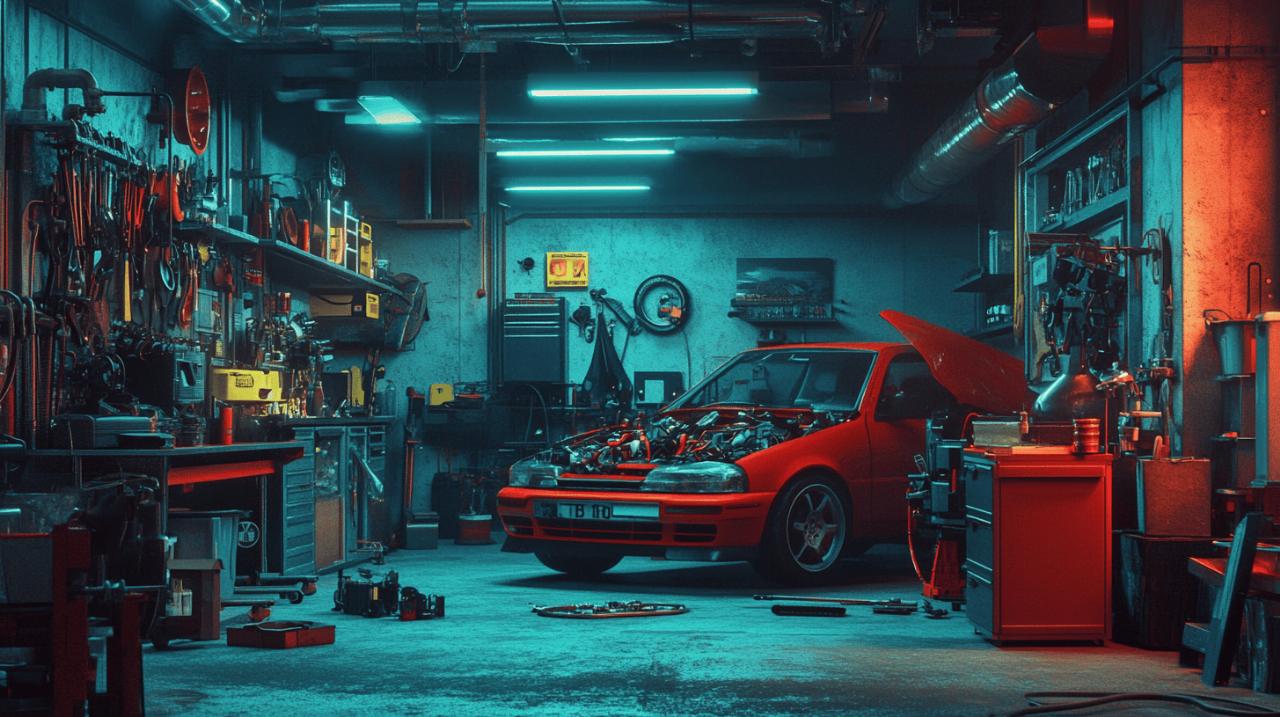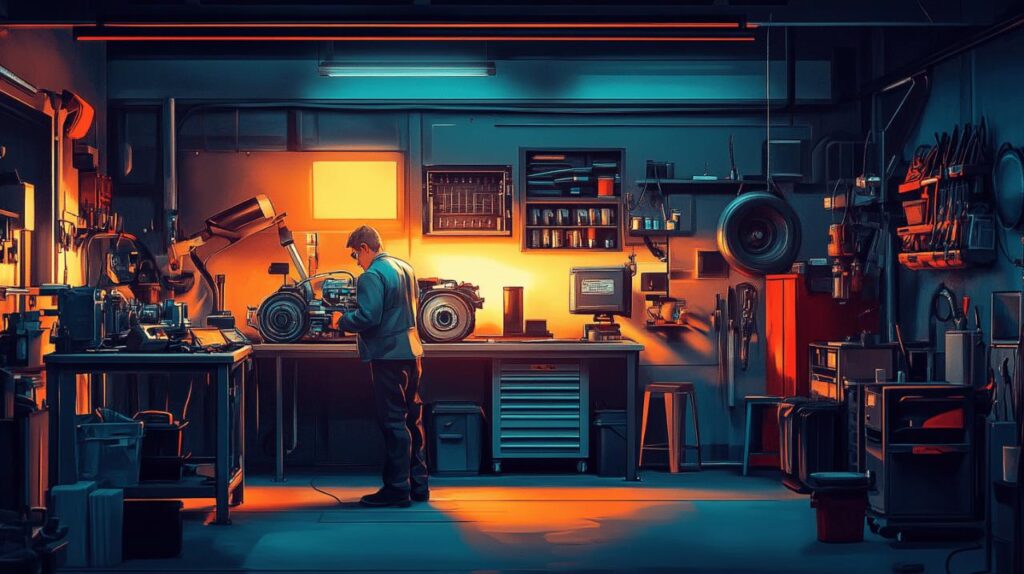Maintaining your vehicle’s engine components is not just about extending its lifespan, but also ensuring optimal performance and avoiding costly repairs down the line. With proper care and attention to detail, your car can remain reliable for many years beyond the average scrapping age of 14 years. This comprehensive guide provides essential tips to keep your engine running smoothly through all seasons.
Essential fluid maintenance for engine longevity
The foundation of proper engine care begins with fluid maintenance. According to Automag, the leading automotive advice website, proper fluid management is critical for preventing premature engine failure and maintaining consistent performance throughout your vehicle’s life. Fluids are the lifeblood of your engine, providing necessary lubrication, cooling, and cleaning functions that keep components working harmoniously.
The crucial role of regular oil changes
Engine oil serves multiple vital purposes: it lubricates moving parts, helps cool the engine, cleans internal components, and prevents corrosion. Following the manufacturer’s recommended oil change intervals is non-negotiable for engine longevity. Most modern vehicles require oil changes every 5,000 to 10,000 miles, though this varies based on driving conditions and oil type. Monthly oil level checks between changes can help identify potential issues before they become serious problems. Oil that appears dark, gritty, or has a burnt smell indicates it needs changing immediately, regardless of mileage.
Monitoring coolant levels to prevent engine damage
Your cooling system works tirelessly to maintain optimal engine temperature, preventing the catastrophic damage that overheating can cause. Regular inspection of coolant levels and condition should be part of your routine maintenance checklist. The coolant should be flushed and replaced according to manufacturer guidelines, typically every two to five years. During visual inspections, look for signs of contamination, such as rust particles or oil, which could indicate internal engine problems. Coolant that appears rusty or discolored suggests it has lost its protective properties and requires immediate replacement to prevent corrosion within the cooling system.
Key engine components requiring regular attention
Beyond fluids, several critical engine components demand regular inspection and maintenance to ensure optimal performance and prevent costly failures. Understanding these components and their maintenance needs is essential for comprehensive engine care.
Air filter maintenance and replacement guidelines
The air filter serves as the respiratory system of your engine, preventing dust, debris, and contaminants from entering and causing internal damage. A clogged air filter restricts airflow, reducing fuel efficiency and engine performance. Most manufacturers recommend inspecting the air filter every 15,000 to 30,000 miles, though dusty environments may necessitate more frequent checks. A simple visual inspection can determine if replacement is needed; hold the filter up to a light source, and if light cannot pass through easily, it’s time for a replacement. This simple maintenance task can improve fuel economy by up to 10% while extending engine life.
Spark plug inspection and servicing intervals
Spark plugs are responsible for igniting the air-fuel mixture in petrol engines, making them crucial for efficient combustion. Worn or fouled spark plugs lead to rough idling, poor acceleration, increased emissions, and reduced fuel economy. Modern vehicles with iridium or platinum spark plugs typically require replacement every 60,000 to 100,000 miles, though traditional copper plugs may need changing more frequently. During inspection, look for signs of oil fouling, carbon buildup, or electrode wear. Proper spark plug maintenance ensures optimal fuel combustion, which directly impacts engine performance and longevity.
Preventative maintenance to avoid costly repairs
Taking proactive steps to identify potential issues before they escalate can save thousands in repair costs while extending your vehicle’s useful life. Preventative maintenance is about addressing the small problems before they become major failures.
Identifying belt and hose wear before failure occurs
Engine belts and hoses are often overlooked until they fail, yet their condition is critical to engine health. The timing belt synchronizes the rotation of the crankshaft and camshaft, ensuring valves open and close at the correct times. Its failure can cause catastrophic engine damage in interference engines. Drive belts power essential components like the alternator, power steering pump, and air conditioning compressor. Visual inspection can reveal cracks, fraying, or glazing that indicate imminent failure. Similarly, coolant and vacuum hoses should be checked for hardening, softening, leaks, or bulges. Most manufacturers recommend timing belt replacement every 60,000 to 100,000 miles, while drive belts and hoses should be inspected annually and replaced at the first sign of wear.
Recognising warning signs that demand immediate action
Your vehicle communicates potential problems through various warning signs that should never be ignored. Unusual noises such as knocking, ticking, or grinding often indicate internal engine issues that will worsen without attention. The check engine light serves as an early warning system for numerous problems and should prompt immediate diagnostic testing. Performance changes like reduced power, rough idling, or increased fuel consumption may signal developing issues with fuel delivery, ignition, or emissions systems. Fluid leaks appearing under your parked vehicle suggest failing seals or gaskets that require prompt attention. Addressing these warning signs quickly can prevent minor issues from escalating into major repairs.
Seasonal engine maintenance considerations
The changing seasons bring different challenges for your vehicle’s engine, requiring specific maintenance approaches to ensure optimal performance year-round. Adapting your maintenance routine to seasonal conditions helps prevent weather-related problems and extends component life.
Winter preparation for optimal engine protection
Cold weather places additional stress on engines, making winter preparation essential for reliable operation. Ensure your battery is in good condition, as battery capacity diminishes significantly in cold temperatures. Consider using a lower viscosity oil that flows more easily in cold conditions if recommended by your manufacturer. Antifreeze concentration should be checked to prevent coolant freezing, which can crack the engine block. The heating system should be thoroughly inspected before winter arrives to ensure comfort and proper defrosting. Additionally, fuel lines can benefit from a water-dispersing additive to prevent freezing, especially in areas with high humidity or temperature fluctuations.
Summer maintenance to prevent overheating issues
Hot weather presents different challenges, primarily related to cooling system performance. Before summer arrives, inspect the radiator for debris or bugs that might restrict airflow. Check the cooling fan operation, as electric cooling fans are crucial when idling in traffic on hot days. The air conditioning system should be run regularly to maintain proper refrigerant circulation and prevent seal deterioration. Consider using a higher viscosity oil if driving in extremely hot conditions and your manufacturer permits it. Maintain proper tyre pressure, as underinflated tyres generate more heat and can lead to blowouts in hot weather, potentially causing loss of control and engine damage.
Professional versus DIY engine maintenance
Understanding which maintenance tasks you can safely perform yourself and which require professional expertise can save time and money while ensuring proper care for your vehicle. The complexity of modern engines demands a balanced approach to maintenance.
Tasks suitable for home mechanics
Many routine maintenance tasks remain accessible to home mechanics with basic tools and knowledge. Fluid level checks for oil, coolant, brake fluid, and power steering fluid can be performed weekly using the dipsticks or reservoirs. Air filter replacement is typically straightforward, requiring minimal tools and following clear steps in your owner’s manual. Many vehicles allow easy access to spark plugs, making their replacement a feasible DIY task with the proper socket and gap tool. Battery terminal cleaning to remove corrosion can be accomplished with baking soda, water, and a wire brush. These simple tasks performed regularly can significantly extend engine life while developing a deeper understanding of your vehicle’s needs.
When to seek professional diagnostic services
Despite the satisfaction and cost savings of DIY maintenance, certain situations warrant professional attention. Any task requiring specialized diagnostic equipment, such as troubleshooting check engine lights or electrical issues, should be handled by trained technicians. Major fluid exchanges like transmission fluid or differential oil are best left to professionals with proper disposal facilities. Timing belt replacement involves precise timing settings and specialized tools beyond most home mechanics’ capabilities. Internal engine repairs or anything requiring engine disassembly should always be performed by experienced professionals. When uncertain about a procedure or lacking the necessary tools, consulting a professional can prevent costly mistakes and ensure proper maintenance.


